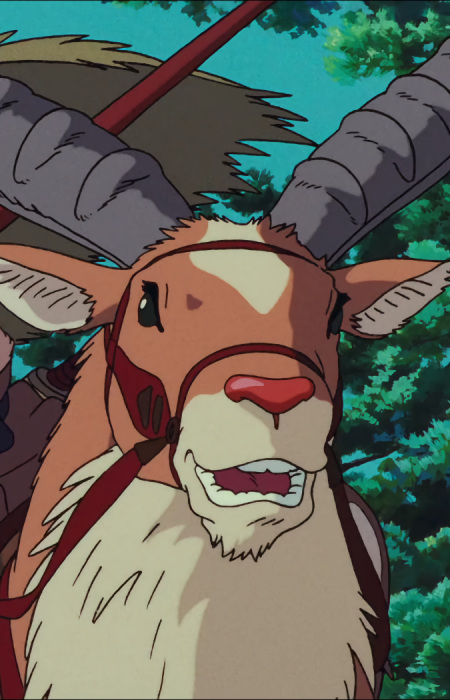
| Original Name | ヤックル |
|---|---|
| Romaji Name | Yakuru |
| Nicknames | None |
| Series | Mononoke Hime |
| Age | Not specified |
| Weight | Not specified |
| Height | Not specified |
| Date of Birth | Not specified |
| Blood Type | Not specified |
Yakul is a character from the famous animated film “Mononoke Hime” directed by Hayao Miyazaki. In this article, we will explore Yakul’s personality, background, appearance, abilities, and origin to gain a deeper understanding of this beloved character.
Personality
Yakul is portrayed as having a gentle and watchful nature. As Ashitaka’s loyal companion, he remains steadfastly by his side throughout their journey. Yakul’s unwavering loyalty and devotion to Ashitaka is evident as he refuses to leave his side, demonstrating his deep bond with the protagonist.
Background
Yakul’s background is not extensively explored in the movie. However, it is worth mentioning that Yakul is based on a character named Yakul who appeared in “The Journey of Shuna”, another work by Hayao Miyazaki. In addition, Yakul draws inspiration from the character Kest (ケスト) in “Dork in Nausicaä of the Valley of the Wind. These influences contribute to the rich and diverse world that Miyazaki has created.
Appearance
Yakul is depicted as a large noble animal and serves as Ashitaka’s pet, friend, and mount. He is visually striking with his majestic antlers on his head, adding to his regal presence. Yakul’s physical features, such as his soft and supple fur, further enhance his endearing appearance.
Abilities
Yakul has remarkable physical abilities that help Ashitaka in his adventures. Despite his large size, Yakul displays agility and fearlessness when traversing steep slopes. He moves with a grace and speed reminiscent of a bird in flight. Yakul’s agility and strength make him an excellent means of transportation for Ashitaka and a reliable companion in their endeavors.
Origin
Yakul’s origin is not explicitly explained in the movie. However, it is important to note that Yakul is the last remnant of a dying breed, symbolizing the dwindling presence of the natural world. This aspect dovetails with the overarching environmental themes present in “Mononoke Hime,” which focuses on the conflict between human progress and the preservation of nature.
Yakul – FAQ
Who is Yakul in “Mononoke Hime”?
Yakul is a fictional character in the animated film “Mononoke Hime” (also known as “Princess Mononoke”) directed by Hayao Miyazaki. Yakul is a red moose and serves as the faithful steed and companion of the film’s protagonist, Ashitaka.
What is Yakul’s role in the story?
Yakul plays an important role in the story as Ashitaka’s trusted companion throughout his journey. Yakul assists Ashitaka in his quest to find a cure for a curse inflicted upon him and acts as his means of transportation, providing support and companionship along the way.
Does Yakul have any special abilities?
No, Yakul does not have any special abilities or magical powers in the movie. However, Yakul displays remarkable endurance, strength, and agility, which contribute to Ashitaka’s ability to navigate the challenging landscapes and survive dangerous encounters.
What is the nature of Yakul’s relationship with Ashitaka?
Yakul shares a strong bond with Ashitaka and is portrayed as a loyal and dependable friend. The two communicate through non-verbal cues and demonstrate a deep understanding and trust in each other. Yakul’s presence symbolizes the connection between man and nature in the film.
Does Yakul have a symbolic meaning in “Mononoke Hime”?
Yes, Yakul has a symbolic meaning in the movie. As a moose, Yakul represents the harmony and interconnectedness of nature. Yakul’s loyalty and resilience reflect Ashitaka’s own dedication to preserving the balance between man and nature.
What is Yakul’s role in the film’s environmental themes?
Yakul serves as a visual embodiment of the film’s environmental themes. The character emphasizes the importance of respecting and coexisting with nature rather than exploiting or destroying it. Yakul’s presence reinforces the idea that humans are a part of nature and should strive for harmony with the natural world.


